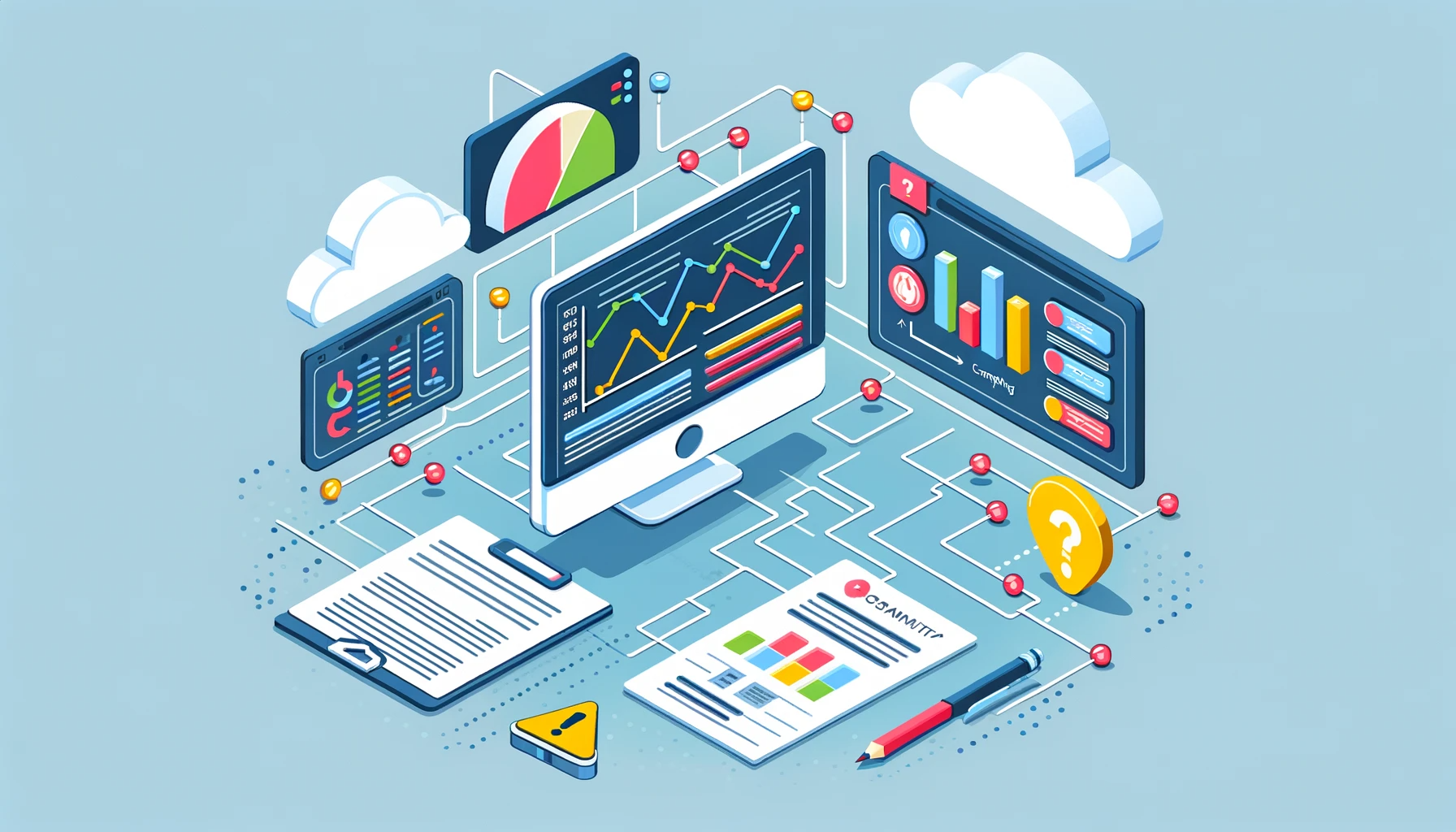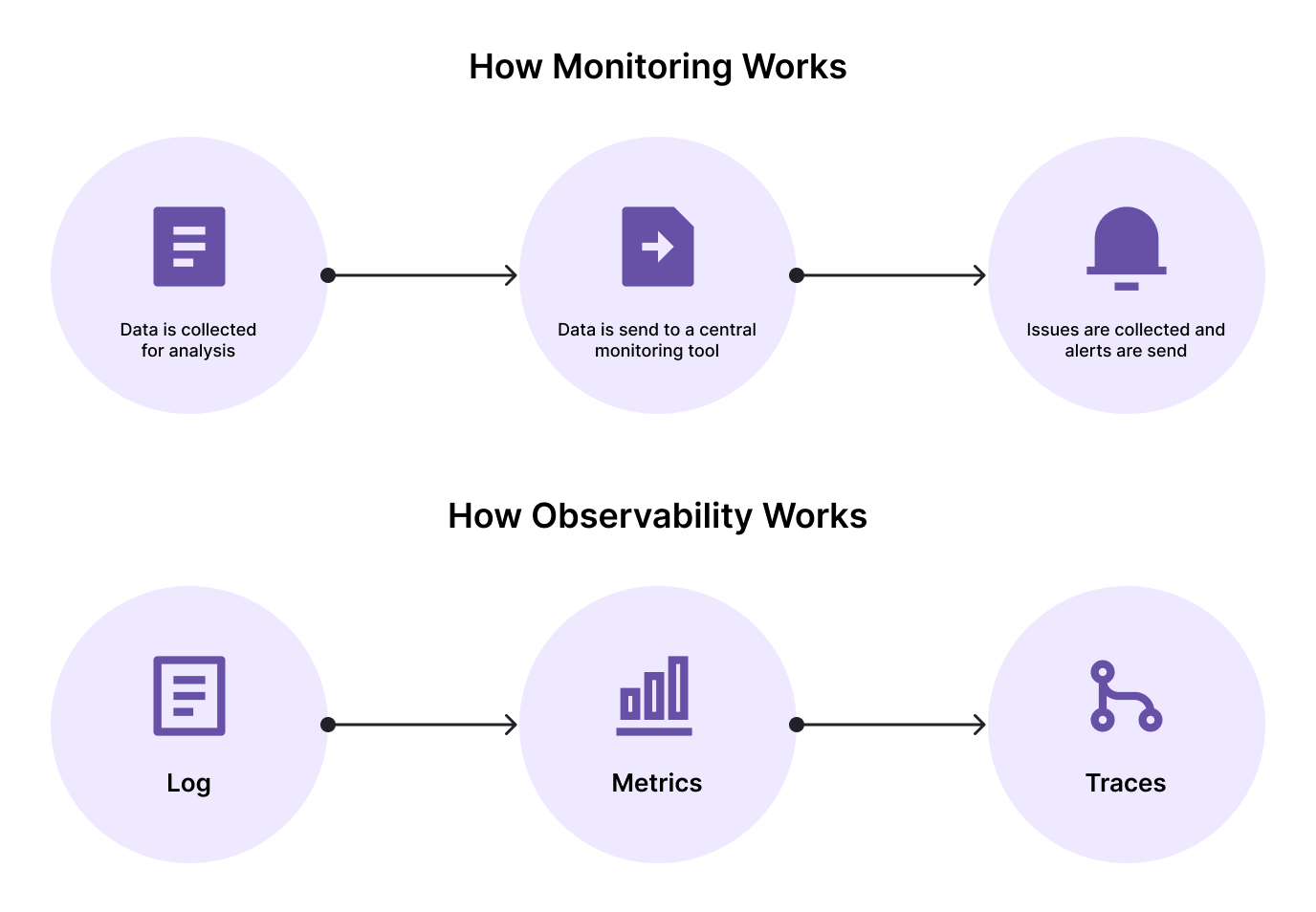We all are well aware that legacy approaches, which are designed to handle predictable failures, are not suitable for monitoring modern distributed applications. Since microservices design has become the de facto standard for applications, a measurable system is necessary for efficient debugging; that is, one may infer the internal status of the system by looking at its output.
For development teams, however, the distinction between monitoring and observability is frequently unclear. In this blog, We talk about observability, monitoring, and their interaction Let's understand What Observability and Monitoring mean
Monitoring
Monitoring is the process of collecting and examining data from infrastructure and applications to measure performance, to mitigate and fix problems. This is determined by monitoring metrics that offer information and support the making of business choices. One such example would be checking network metrics like latency and connectivity to keep an eye on the availability and responsiveness of the service. The main advantages and beauty of monitoring are in the long-term trend analysis and alerting. It provides you with information about your apps' growth, usage patterns, and overall operation.
Observability
The capacity to comprehend and gain insight into the internal conditions of your system and infrastructure through external data produced by the system, including as logs, metrics, events, and traces, is known as observability. Context and a thorough grasp of the interdependencies between the many apps in your IT environment are provided by observability. Therefore, a more visible system will be able to more quickly, proactively, and precisely identify problems and their underlying causes.
In summary, observability aids in our comprehension of the what, how, and why of the system's issue-based output.

Observability vs Monitoring What’s the difference?
Software engineers can better understand the behavior of their IT environments by using ideas like monitoring and observability. But there's one big distinction between the two.
While observability encompasses all aspects of an application's performance, including logs, metrics, events, and traces, monitoring often focuses on gathering data about the health and performance of systems.
DevOps and other IT teams can identify possible issues and long-term performance patterns with the usage of dashboards, which are used by monitoring systems to collect and present predefined data. Unfortunately, monitoring—especially in a highly complex distributed system—may be unable to identify the specific component or root cause of an operational issue, even while it uses alerts to notify DevOps teams of such concerns. Observability, on the other hand, uses data collected from every internal system to provide insights and a thorough evaluation of the entire IT environment. This includes metrics such as memory usage, bandwidth utilization, response time, requests per minute, or uptime, along with logs of events that are recorded and transaction traces. Teams can comprehend, locate, and resolve the core cause of problems affecting the whole IT infrastructure with the use of this detailed and contextual understanding. It serves as a knowledge base for engineers to specify what they wish to track and how to raise efficiency as a result.
The Relationship between Observability and Monitoring:
Through the use of telemetry data and alerts, monitoring informs teams of problems so they may fix them before they get worse. However, identifying the root cause of the problem and conducting a thorough investigation are necessary to stop the recurrence of the same problem. Only observability can deliver this.
Now let's create a scenario.
Database monitoring frequently involves tracking memory, CPU utilization rates, and cache hit ratio. To make sure they don't cross the barrier, warnings are typically put on them. A poorly constructed or optimized query may be the cause of an alert indicating that the CPU utilization has increased or the cache hit ratio has deteriorated. But to be certain, you would have to use an observability tool. There is considerably more to monitoring complicated distributed applications than just this typical use case related to database performance. Debugging is also far more difficult. In light of this, the conclusion to the observability vs. monitoring debate is that combining the two strategies is necessary to solve problems faster and more effectively. Teams will be able to answer the what, how, and why of today's distributed multi-cloud microservice architectures with various dependencies and evolving complexities by doing this. They will also be able to comprehend the context and the occurrence.

Observability vs Monitoring which is better?
It's not a monitoring vs. observability problem, although they have certain similarities and distinctions. Instead, consider them as supplementary tactics that enable you to effectively accomplish your objective, which is to gain a deeper understanding of your system.
While monitoring facilitates the tracking of environmental events, contextualized analysis of your infrastructure landscape requires observability. However, the converse is also true. Monitoring is a precondition for observability. The reason for this is that an unmonitored system is impossible to watch.
Therefore, in order to gain any kind of meaningful insight into the complex IT systems of today, both approaches are necessary.Conclusion:Production-ready apps break for a variety of reasons. There will always be something that goes wrong, no matter how hard you try. It will be difficult to troubleshoot production issues if the components of your application are not properly instrumented to be observable. That being said, not every problem can be solved by an observable system.
You must constantly assess the value of the data you now have. To assist you find solutions to both known and unknown production-related issues, observability needs to have the correct data. To the extent that you can obtain answers to any questions required to support your application at the desired degree of quality, you must continuously modify the instrumentation of your system until it is suitably observable.Monitoring alerts you to issues, while observability empowers you to comprehend the reasons behind those issues. Monitoring is a component of observability and a crucial step in achieving it.

